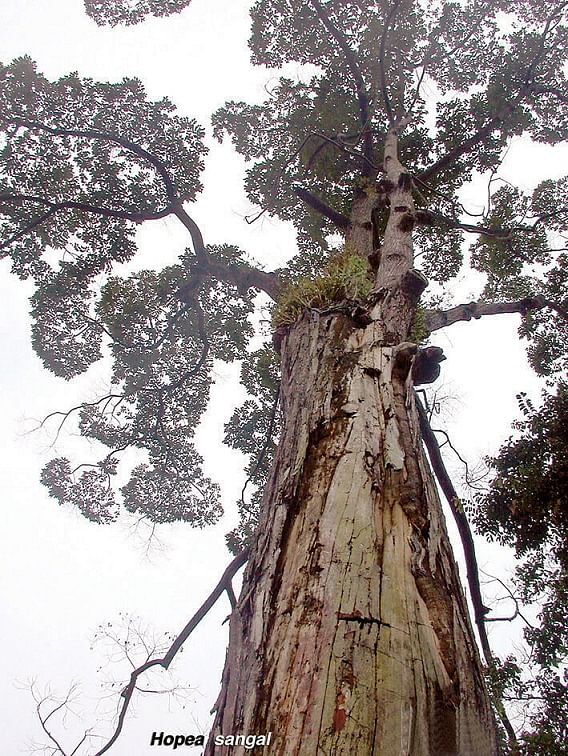The ST Guide To... Singapore's rarest plants and animals
Sign up now: Get ST's newsletters delivered to your inbox
Follow topic:
What is your first reaction when you hear of a "wild" Singapore?
Many may find it hard to believe that this built-up city teems with all sorts of plants and animals - but it does.
Even the mythical god of the sea has given his stamp of approval to this little red dot. The Neptune's cup sponge, a sea creature shaped like a large goblet, was first re-discovered in Singapore waters in 2011, after it was thought to be globally extinct.
There are plenty of other creatures worth celebrating, as the recent two-day Festival of Biodiversity organised by the National Parks Board (NParks) proved.
Now, some of these creatures may be shy and it is not always easy to spot them even when on trips to the Republic's nature reserves - the last bastions of wilderness in Singapore, where rare wildlife thrive.
Learn more about Singapore's natural gems with this guide to some of the most elusive denizens of the Republic's nature areas.
New discoveries

The extinct, fearsome dinosaur, Tyrannosaurus rex, lives on in Singapore's forests, but in the most unlikely of forms.
An extremely rare ant called the Tyrannomyrmex rex was observed alive for the first time in the forests of Mandai, by entomologists Mark Wong and Gordon Yong.
It was named for its resemblance to the dinosaur, as the mandibles near its mouth reminded the scientist who first discovered it of the stubby arms of Tyrannosaurus rex and other carnivorous dinosaurs.
However, no one had ever observed a T. rex ant alive for an extended period of time - until Mr Wong and Mr Yong's discovery.
The duo found that the ants did not live up to the reputation of their namesake. In fact, the insects often froze up and ran away when other organisms came close, the National Geographic reported.

Singapore's forests are so rich and dense, that it is not just tiny creatures that slip under the radar.
This is good news, considering that the last Hopea sangal tree in Singapore in Changi was believed to have been illegally felled in 2002.
NParks has been working over the years to help repopulate Singapore with this species, by nurturing seeds salvaged from the Hopea sangal in Changi into saplings in their nurseries. But the discovery of the five mature trees in the wild show there is plenty more to discover in Singapore's forests.
An unlikely haven
Some animals that are threatened with extinction elsewhere in the world have also found a haven in Singapore.

Recently, however, Nature Society (Singapore) bird group member Yong Ding Li found that the bird's numbers on Pulau Ubin have nearly doubled in 10 years. The Straits Times reported last December that Singapore is thought to have at least 200 straw-headed bulbuls - and counting.
Non-governmental organisation Traffic, which monitors the wildlife trade, said then that Singapore was "one of the few remaining strongholds for the species".
Pangolins too are hunted around the world for their scales, which are used in traditional medicine.
But the scaly mammals do not face as big a poaching threat in Singapore. Research is also ongoing here to help scientists learn more about these animals, so they can be better conserved.
There are eight species of pangolins found worldwide, and one of them, the Sunda pangolin, can be found in the wilderness here. It is estimated that there are more than 100 pangolins in Singapore.

NParks is working with the Wildlife Reserves Singapore, wildlife rescue group Animal Concerns Research and Education Society, as well as the National University of Singapore, on a project to track the dispersal movement, home ranges, and habitat selection of rescued and translocated Sunda pangolins in Singapore.
Such data will help with conservation strategies for this critically endangered animal, which people know very little about.
Underwater treasure

The murky waters in Singapore also hide rich bounty, such as the Neptune's cup sponge.
Since the first sponge was rediscovered in 2011, more individuals have been uncovered. There are now five known Neptune's cup sponges in Singapore - not bad, for an animal that was a few years ago thought to be globally extinct.
And just earlier this week, a new species of bannerfish was found at the Sisters' Islands Marine Park - it is the first record of the yellow-and-black masked bannerfish in Singapore waters.
The crystal freshwater streams of Singapore's nature reserves are also full of life - some of which can be found only in Singapore.

The Johora singaporensis, the Singapore freshwater crab, is uniquely Singaporean and is not found anywhere else in the world. It is critically endangered, and has its very own national action plan of protection.
So even as we celebrate all things weird and wonderful, remember: they did not come easy. As Mr Desmond Lee, Minister in the Prime Minister's Office and Second Minister for Home Affairs and National Development, said during last week's Festival of Biodiversity: "While we marvel at our rich biodiversity, we cannot take it for granted. Conservation requires a long-term effort."

